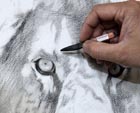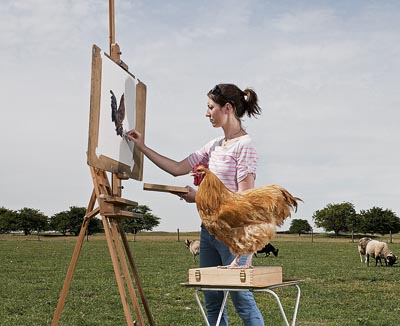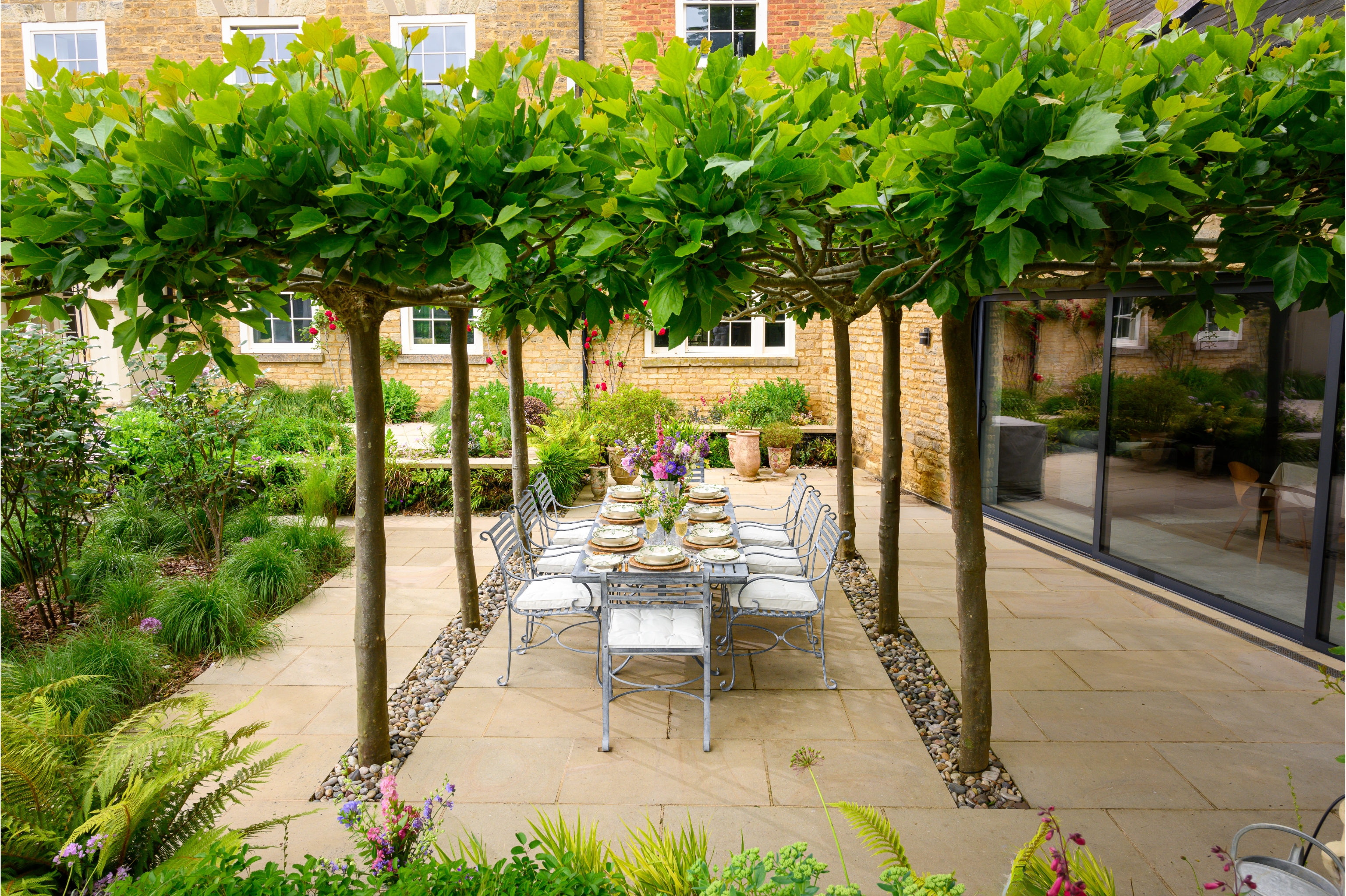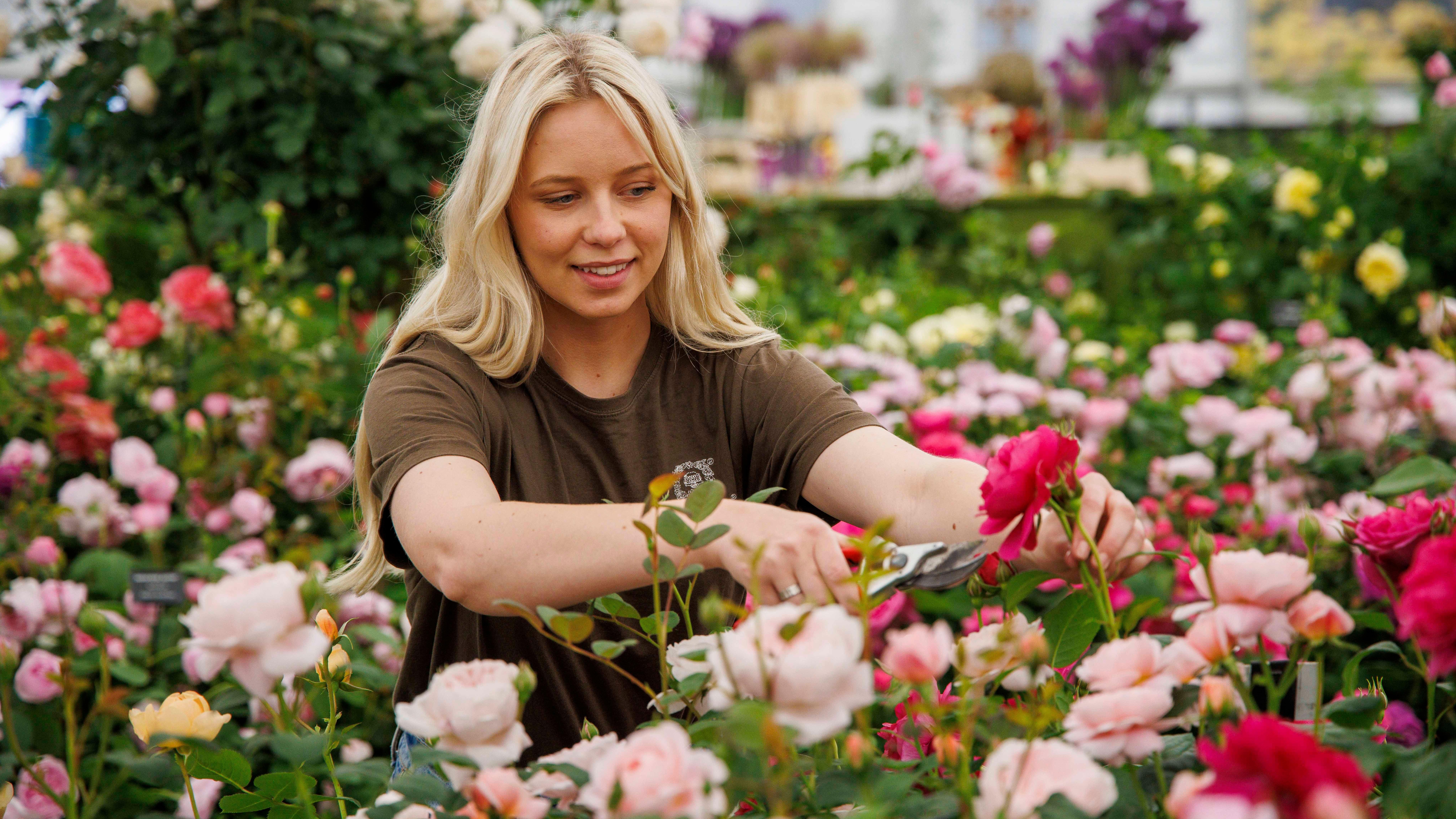Learn to paint like a master
Learning to paint at Charles H.Cecil Studios in Florence


Old Master painting has never been more popular, as the crowds pouring into the National Gallery's magnificent exhibition on Veronese vividly demonstrate. Like most public collections, the National Gallery has educational programmes designed to introduce children to the art of the past. But what if some eager teenager asks where it's possible to learn the techniques that Veronese used? Where can a student study draughtsmanship, practise life drawing and be taught how to use oil paints?
The answer is not to bother with art schools. During the past three decades, the stranglehold of a particular sort of art, largely conceptual in basis, has meant that their students won't be trained in traditional techniques, even if they ask for them.
However, the lessons of the Old Masters have been, for many years, taught rigorously and effectively in Florence by an American portrait painter. Charles H. Cecil studied in Boston with the American artist R. H. Ives Gammell, who worked in the tradition of John Singer Sargent. In 1983, he opened a school and, since then, a generation of realist artists has trained at the Charles H. Cecil Studios, based in the studio of the 19th-century sculptor Lorenzo Bartolini in the former Chiesa di San Raffaello Archangelo.
Students follow a disciplined course of drawing from plaster casts before they begin on life classes, where they progress from charcoal to a strictly limited oil palette. The principal technique taught when painting a portrait is the ‘sight-size' method, in which the artist places the canvas alongside the sitter and then stands back at a given distance so that subject and image are equal in size to the eye and the painting is seen to the scale of life.
The technique was seen in action in a recent television documentary about Nicky Philipps's painting of the Falklands veteran Simon Weston for the National Portrait Gallery-Miss Philipps constantly moved back from her canvas so that Mr Weston appeared to her at the same size as his image. Sara Stewart, whose company Fine Art Commissions represents Miss Philipps as well as several other distinguished portrait painters, has no doubt of Mr Cecil's influence: ‘He has filled a vacuum.
The school has had a positive impact on many British painters, who have learned there the grammar of painting, which is all-important for traditional representational art.'
The Charles H. Cecil Studios also runs a number of short courses in portraiture and life drawing. Prices begin at €1,600 for a two-week life-drawing course (00 39 055 285102; www.charlescecilstudios.com)
Sign up for the Country Life Newsletter
Exquisite houses, the beauty of Nature, and how to get the most from your life, straight to your inbox.
Aengus Dewar
In 1992, Aengus Dewar was a student in Dublin when his life was changed by the loan of Caravaggio's The Supper at Emmaus to the National Gallery of Ireland. This masterpiece of dramatic realism planted in him the desire to be ‘an effective realist artist', but after a few years of experimentation, he was forced to recognise that he lacked the skill set: ‘I was an enthusiastic amateur.'
Then, he heard of ‘a little oasis where you could pick up tried and tested techniques'. Within a couple of months, Mr Dewar found himself in Florence, where he stayed for nearly four years. He found the regimented teaching inspiring. ‘The sight-size technique was very heavily indoctrinated into you. It was a bit of a revelation.'
Equally stimulating was the system of critiques: ‘You'd have a three-hour session in the morning drawing a plaster cast and, then, the more advanced people would look at what you'd done.' It wasn't just about technique-‘Charles was keen that students should be exposed to ideas and we had lectures in the classics-for two years, I lectured on Hellenistic history.'
The setting was equally important: ‘Charles encouraged us to wander around. We were surrounded by art and I soaked it up like a sponge. Florence made me realise that art isn't always behind gallery doors-it can be there on a dingy street corner.'
Although Mr Dewar is probably best known as an animal painter (‘I've got a thing about rhinoceroses at the moment'), he is unusual among Cecil graduates in putting the lessons he learned into challenging the Old Masters on their own ground. Thanks to a patron in Ireland, Mr Dewar has produced several large-scale religious and allegorical paintings. ‘Charles, to his credit, didn't discourage this, but he was realistic-large compositions are mind-bogglingly testing.' But without a training of the sort Mr Cecil provides, who could hope to succeed?
Aengus Dewar's next exhibition opens at the Fox Club, 46, Clarges Street, London W1 on June 30 (07530 636506; www.aengusart.co.uk)
Charles Church
Charles Church was living in Newmarket, painting horses and washing dishes in a hotel, when he sought equestrian artist Susan Crawford's advice. He wrote to her in 1991, asking about where to get a proper training. ‘I knew she'd studied traditional techniques in Italy with Nerina Simi and Pietro Annigoni and she told me about Charles Cecil. I did a bit of research and got the next flight to Florence.'
Unusually, Mr Church wasn't a student-he'd already had his first exhibition-but his background was in graphic design and illustration, not fine art, simply because he'd been unable to find any art school that would let him study traditional techniques.
‘The Cecil school was everything I'd hoped for in terms of training,' he recalls. ‘On my first day, I was set up with a cast of a skull to copy in charcoal. It was a lesson in learning to see and that was really the whole ethos-it wasn't just about learning techniques. It blew my mind. After I'd been there about nine months, I had an epiphany when painting a female nude; I believe artists see in a different way to others and it was the moment I felt that happen and everything from then on clicked into place.'
He adds: ‘Charles was very kind to me. My parents wouldn't bankroll me, so he made me a student/assistant. I spent the first month living on the studio floor, breathing in turps.'
Mr Church is aware of the criticism that the school's students all go on to paint in the same manner, partly because of the insistence on their using a limited palette: ‘It has a reputation of turning out portraitists all painting in the same rather brown way, but it's important to train people in this basic, rigid manner so that they can then develop. A lot of students go straight from school and find it difficult to get away from what they're taught there. It was easier for me, as I'd already painted a lot, but I wouldn't have got where I am without it.'
(www.charleschurch.net)

Imogen Man (pictured)
At the end of her three years in Florence, Imogen Man heard Mr Cecil lecturing. ‘He commented that all the British girls who come here go back to England and start painting dogs. I don't think he was very impressed.' As soon as Miss Man returned to London, she was commissioned to paint a dog and that's what she's done ever since, with great success.
Miss Man was a disillusioned young art student when her mother read an article about the school in a magazine at the dentist. ‘I'd looked all over for somewhere to train, from Glasgow to Falmouth, and the fashion everywhere was for conceptual art. They all said "Whatever you want to do, we'll help", but it wasn't true.'
In 2003, her father took her to inspect the Charles H. Cecil Studios. ‘I knew what art schools were like and so I was blown away by the standard.'
She took to the teaching at once: ‘It was like cooking-we followed a recipe. I'd never been taught art like that. The first year was all charcoal life drawing and drawing plaster casts, which are easy as they don't move. You look at shadows and shapes.' Students choose their own models for the portrait classes: ‘There's a pin-board of passport photos of potential models of all nationalities and you choose which face you like and give them a ring. You pay them. I found the classes intimidating at first, but when the face starts coming through, it's easy to lose yourself.'
Imogen Man is exhibiting at the Animal Art Fair at the Affordable Art Fair on Hampstead Heath, London NW3 on June 12-15 (07900 928126; www.imogenman.co.uk)
Nicky Philipps
It was a discussion with the equestrian artist Susan Crawford that also led Nicky Philipps to Florence in 1987. ‘I wanted to paint horses, the subject that I love above all others, and she told me about a studio in Italy being run by two Americans.' Mr Cecil was then in partnership with Daniel Graves (who now runs the Florence Academy of Art) and it was the Studio Cecil Graves. ‘Dan taught technique-I remember him showing me how to stretch a can-vas-and Charles was more interested in the history of art. They made a good team and I thought it was a great pity that they separated.'
The studio was much smaller and more informal then. ‘There were five American boys, two British girls and an Italian girl, and Dan and Charles painted beside us on private commissions.' Miss Philipps found the insistence on going back to basics deeply rewarding. ‘We ground our own paints. If you produced a tube from Winsor & Newton, Charles and Dan looked at it suspiciously and said "Yes, but what's in it?".'
Most of all, the studio offered something that Miss Philipps had almost given up hope of finding: someone to teach the grammar of painting. ‘I don't think anyone's been able to teach it much for 50 years. It's very sad, but there's this resistance to academic training because it's thought that you mustn't do anything to restrict a person's natural flamboyance and so you dismiss 500 years of tradition.'
Is there any sign of other teachers following Mr Cecil and Mr Graves's example? Miss Philipps cites ‘the Lavender Hill Studios in London, which was founded by two Charles Cecil pupils, Ann Witheridge and Scott Pohlschmidt, plus Nick Bashall, who was trained in Spain'. Although she's modest about volunteering the information, Miss Philipps is herself embarking on a teaching venture, at her family home, Picton Castle in Pembrokeshire: ‘I'm terrified.'
(www.pictoncastleartgroup.com; www.nickyphilipps.com)
* Follow Country Life magazine on Twitter
Country Life is unlike any other magazine: the only glossy weekly on the newsstand and the only magazine that has been guest-edited by HRH The King not once, but twice. It is a celebration of modern rural life and all its diverse joys and pleasures — that was first published in Queen Victoria's Diamond Jubilee year. Our eclectic mixture of witty and informative content — from the most up-to-date property news and commentary and a coveted glimpse inside some of the UK's best houses and gardens, to gardening, the arts and interior design, written by experts in their field — still cannot be found in print or online, anywhere else.
-
 18 inspiring ideas to help you make the most of meals in the garden this summer
18 inspiring ideas to help you make the most of meals in the garden this summerFrom tie-dye tablecloths to tasseled awnings, there's something for every garden space.
-
 Chelsea Flower Show 2025: The essential guide for first timers
Chelsea Flower Show 2025: The essential guide for first timersThe RHS has gone to great lengths to make the Chelsea Flower Show as fun and accessible for people of all gardening abilities. If you're planning to visit for the first time, here's everything you need to know.